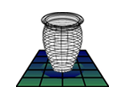Framework Archaeology Heathrow Terminal 5 Excavation Archive
Framework Archaeology, 2011. https://doi.org/10.5284/1011888. How to cite using this DOI
Data copyright © Framework Archaeology unless otherwise stated
This work is licensed under the ADS Terms of Use and Access.
Primary contact
Wessex Archaeology
Portway House
Old Sarum Park
Salisbury
SP4 6EB
UK
Tel: 01722 326867
Fax: 01722 337562
Resource identifiers
- ADS Collection: 1080
- DOI:https://doi.org/10.5284/1011888
- How to cite using this DOI
Introduction
Framework Archaeology is a Joint Venture agreement between Oxford Archaeology (OA) and Wessex Archaeology (WA) to provide archaeological services to BAA. Given the potential scale of some of BAA's projects, the joint venture enables Framework Archaeology to draw on the full resources of both OA and WA, including site staff, specialist managers, administrative support, and technical facilities. This combination of resources (totalling over 300 staff) considerably reduces risk for both our client and us, and provides Framework Archaeology with a wider skills base.

Framework Archaeology is committed to a particular archaeological philosophy developed by BAA's archaeological consultants, Gill Andrews and John Barrett. This is concerned with understanding how people inhabited past landscapes: archaeology as a study of people rather than deposits or objects. This approach is at the heart of the Archaeological Policy adopted by the BAA Main Board. Framework projects are thus academically driven but undertaken within a commercial environment. In order to fulfil the approach a Framework Archaeology recording system has been developed and is now in operation on all Framework Projects. It places great emphasis on interpretation in addition to recording, and developing a historical narrative as the site is excavated (Andrews, Barrett & Lewis 2000).
Between 1996 and 2000 Framework Archaeology undertook extensive excavations of an important prehistoric and Roman landscape at Perry Oaks sludge works, Heathrow, Middlesex. Further archaeological work in advance of a fifth passenger terminal ("T5") at Heathrow Airport took place from 2002 onwards, and the results of those excavations will be integrated with the data contained in this archive.
The digital archive for the Framework excavations at Stansted is also held by the ADS.





